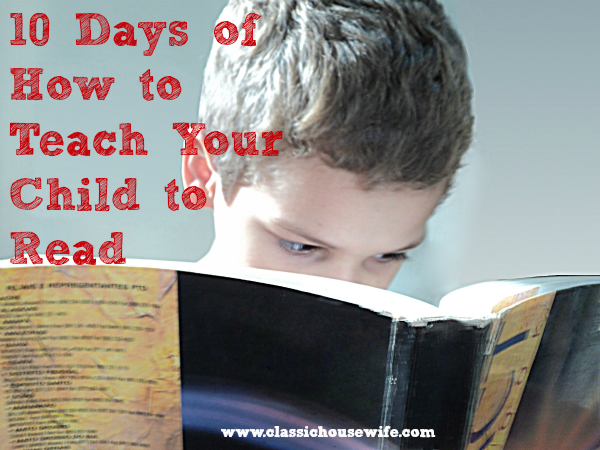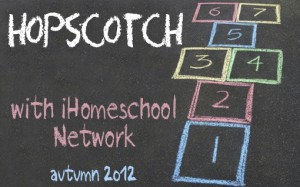The different approaches to teaching reading:
Your pre-reader is showing the signs and the interest in learning to read, so it’s time to start, right? There are two main approaches to reading: phonics and sight word. There is also a third approach which combines the two. I tend toward the third approach, with a little more emphasis on the phonics. First, let’s take a brief look at each.
What is a Phonics Approach to Reading?
A phonics approach teaches the relationships between the letters (graphemes) and their sounds (phonemes) so that a child may “decode” words and sound them out piece by piece. Phonics may be taught systematically (teaching sets of phonemes as groups before beginning reading instruction) or analytically (analyzing the words in a text, looking for familiar phonemes and learning new ones as you go.) Some phonics approaches are very intensive, others are not. A phonics approach gives a child the ability to sound out new words with the building blocks they have already learned.
What is a Sight (or Whole Word) Approach to Reading?
A whole word approach to reading teaches kids to recognize whole words by sight, beginning with high frequency words and moving on from there. A whole word approach does allow young kids to learn a great deal of words very quickly, but can hinder a child’s ability to decode new words on their own.
Taking a balanced approach to teaching reading:
Some people, like myself, like to use a combination of these two approaches. As adults, we recognize words by sight, we only sound out words when we come across new words we have never seen before. This is, of course, our ultimate goal in reading – to develop successful readers who can read fluently and have the tools to decode new words with ease. You will probably find a great deal of variety among those who choose to blend these two approaches together. I prefer a strong phonics foundation but not an intensive one. I don’t prevent my children from recognizing and reading words by sight, I encourage it.
With each of my children I took an approach that went something like this:
- Learn the alphabet and their sounds
- Practice sounding out simple words (with the use of word families)
- Adding blends (bl, fr, etc.) and diagraphs (ch, sh, th, etc.)
- Practice reading simple sentences
- Reading with simple readers, learning new words, sight words, new phonemes as we encountered them.
- Advancing to leveled readers and then short skill level texts.
How to teach phonics:
The thought of teaching phonics can be daunting to some. Honestly, when I think about an intensive phonics approach it is a bit daunting for me, too!! I take a laid back approach to phonics, that is, we learn them and then we use them. We don’t memorize, write and recite all the “rules” and so on. When you teach your child the different sounds the letters of the alphabet stand for, you’re already on the road to teaching phonics!
Because I like to take a multi-sensory approach to teaching and because I like to consider my child’s learning style as well, I use a variety of methods and tools to teach phonics. We use flash cards, rhyme games, fill in the missing letter type worksheets, computer games and other games. (For example, phonemes or simple words written on note cards can placed on the floor and then hopped onto when the teacher calls it out.) Be creative! And have fun with it.
Phonemes:
- Consonants – The sounds of the consonants, don’t forget the hard and soft ‘c’ and the hard and soft ‘g.’
- Vowels – long sounds, short sounds, diphthongs (like ‘ow’ and ‘oy.’ – and all the other vowel combinations
- Consonant blends – where two vowels work together to make a sound but you can still hear both sounds (like ‘br.’)
- Consonant digraphs – where consonants (and maybe some vowels) work together to make a new sound (like ‘ti’ says ‘sh’.)
This is not exhaustive, there are other phonemes you will encounter as you begin reading (like the ‘sc’ in ‘science’ says ‘s’ instead of ‘sk’ and ‘igh’ which makes a long ‘i’ sound!)
Those Pesky Sight Words!
Even if you like a strong phonics approach, there are some words you just HAVE to remember and recognize by sight. Words like “one,” “said,” and “are.” Also words that we don’t say the way they are spelled (‘come’ is not pronounced like ‘comb.’) Making lists of irregular “sight” words, playing games with them and practicing reading them can help.
Sitting down to read – Putting the pieces together.
As we started learning the building blocks we started putting them together in practice. Sitting down with a very simple reader, we would begin to read. Though it may not look much like reading at this point, I assure you, this is reading! I would have my child look at the first word and try to say it, if they already knew it, or correctly decoded it, we would keep going. If they sounded unsure or if they were very close, I would help them sound it out and then pronounce it for them correctly and have them repeat it. If they guessed and got it wrong or didn’t know, we would break it apart into pieces and decode it. Once we reached the end of the sentence we would go back and read the sentence fluidly together.
And this is how it would go, plodding through carefully and intentionally. As we continued the kids would begin to recognize more words and begin making more guesses, sometimes correct and sometimes not. In the beginning this frustrated me, until I began to recognize this as the beginning of the transition from sounding out words to simply knowing them. If they guessed correctly I would let it go, but if they got it wrong I would tell them they needed to sound it out and see if they got it right. Over time, the accuracy rate goes up as well. When the error rate starts increasing, it’s time to slow down and sound things out again. Before you know it your child is really reading and it looks like it, too!
Tips for this phase of reading:
- Take it at your child’s pace! There are a lot of phonemes and rules and exceptions to remember!
- Make it fun, so they enjoy learning.
- Appeal to your child’s learning style. Consider hands on word cards, verbal games, and things they would personally enjoy.
- Praise success – do whatever you can to build their confidence. Knowing they *can* do this makes a big difference!
- Include books and stories that appeal to their interests, encouraging them to read.
When They Struggle
This is by far the hardest phase of learning to read. Before this, they are basically matching and sorting, matching sounds with letters and sorting by patterns. After this, they are practicing what they have learned and expanding their reading vocabulary. But this phase right here is the most difficult, making the transition from learning the pieces to using them, and using them correctly. If your child isn’t ready, this stage will be exceptionally difficult as they struggle to make the transition. If you hit this stage and your child is frustrated and struggles to progress, they may need a bit longer to digest the information or mature to readiness or develop confidence. You may discover genuine difficulties at this point (such as dyslexia or a need for glasses.) You may discover some definitive preferences and needs your child has for learning (such as needing to walk or wiggle to think or preferring to think aloud or in their head.) Regardless of whatever obstacles you uncover, the best thing to do at this stage of the reading process is to watch your child for cues. Your child, even if he doesn’t understand them, will give off clues to what he needs to succeed at this point in his reading journey. While our children work to decode the words on the page, we can observe and decode our childrens’ signals and cues.
Further reading: Printable Irregular Word Cards, Phonics on the Web (contains rules for spelling and phonics,) First School Years (worksheets and printables for consonants, vowels, etc,) Teaching Phonics and Phonics Games at Children’s Books and Reading.
Just joining in? Start at the beginning. (It’s a very good place to start.)
What questions do you have about teaching phonics? Leave them in the comments below. Feel free to answer other questions and encourage each other!
This series is a part of a blog hop called “The Hopscotch” through iHomeschool Network (previously known as “the ten days of” series.) HOP on over and hopscotch through all the other 10 Days series. While you’re there, check out the Pin it to Win It contest featuring a giveaway of products from Prufrock Press.
Image Source: Young Reader by Francisco Farias Jr


